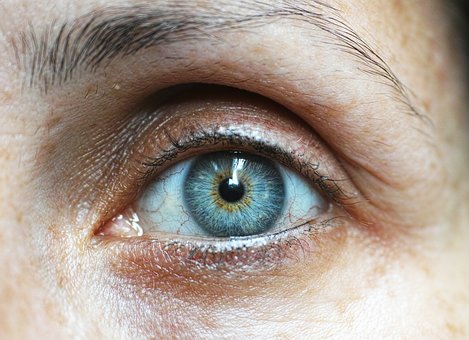To safeguard the health of our eyes, all national and international scientific ophthalmology societies recommend regular thorough eye examinations, especially in the presence of symptoms of discomfort eye, an increasingly frequent phenomenon in an age when the use of device digital (smartphones, computers and tablets) is common and everyday practice.
Below are the ocular symptoms to look out for:
1. Eye pain
Experiencing eye pain is a fairly common symptom, especially during the winter season when it is more common to be affected by colds or sinusitis. However, if the pain persists, it may be associated with more important causes and it is a good idea not to ignore it and to consult an ophthalmologist. If the pain is accompanied by a irritation and burning sensation one could be faced with the so-called "dry eye syndrome', in which there is an alteration of the tear film, or in the presence of blepharitis, in which there is inflammation of the eyelids. In some cases, on the other hand, the pain may be more intense or localised only in one eye and therefore it could be a more serious condition such as optic neuritisdue to inflammation of the optic nerve, which may lead to partial or total loss of vision.
2. Irritated and/or watery eyes
The most common symptoms through which the dry eye syndrome include burning, a foreign body sensation in the eye, a strong sensitivity to light (photophobia), but also an excessive production of tear film with a very watery consistency, This symptom is often not associated with dry eye and is underestimated because it is associated with fatigue or environmental factors such as wind or cold. In reality, dry eye syndrome has a complex clinical picture and is a multifactorial syndrome that often manifests itself following the use of contact lenses or after several hours spent in front of screens, but can be treated depending on the patient's symptoms. To date, there are many tear substitutes that succeed in restoring the patient's ocular comfort by giving a feeling of well-being and relief again. In some cases, however, dry eye syndrome takes on a chronic nature and is also accompanied by dryness of the skin and mouth. In these situations, one could be dealing with manifestations of Sjogren's syndrome, an autoimmune inflammatory disease, or other serious diseases, such as rheumatoid arthritis or systemic lupus.erythematosus .
3. Blood in the eyes
Intraocular bleeding, due to the rupture of small blood capillaries, is a normal sign of ageing or may be due to a sudden increase in blood pressure, taking certain medications, allergies or wearing contact lenses. In some cases, however, it can be the clinical manifestation of a more serious disease, such as conjunctivitis, iritis or following corneal ulcers. In such cases, it would be advisable to visit a specialist for a correct diagnosis and appropriate treatment.
4. Temporary visual impairment
Short-term visual impairment, partial or total blindness even for short periods, are symptoms often associated with the ophthalmic and/or retinal migraine, disorders that inevitably decrease the quality of life of the affected person. Even in these cases, the ophthalmologist can assess the clinical picture and advise the patient appropriately.
Bibliography
-Kim DJ et al. Visual Fatigue Induced by Viewing a Tablet Computer with a High-resolution Display.Korean J Ophthalmol.31(5):388-393, 2017.
-Pflugfelder SC et al. The Pathophysiology of Dry Eye Disease: What We Know and Future Directions for Research.Ophthalmology.124(11S):S4-S13, 2017.
-https://www.aao.org/eye-health/symptoms/pain-in-eye-3
Dr. Carmelo Chines
Direttore responsabile
